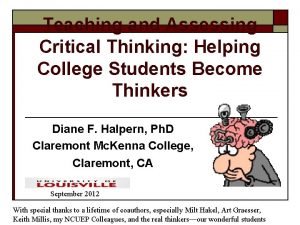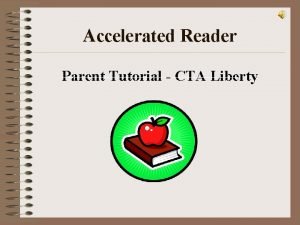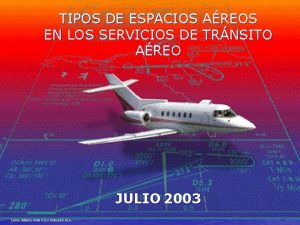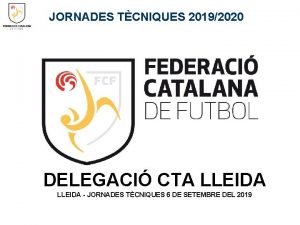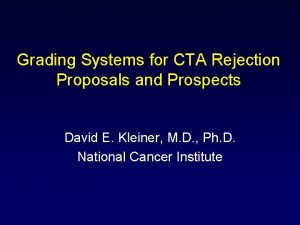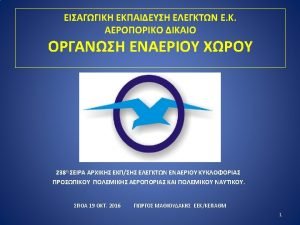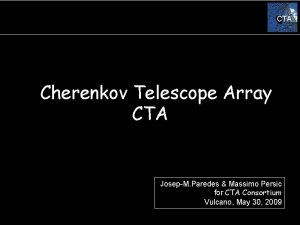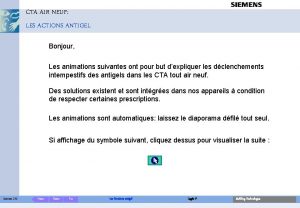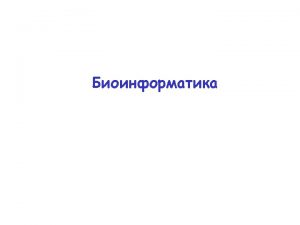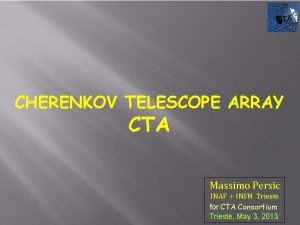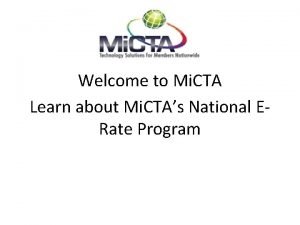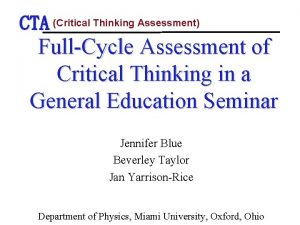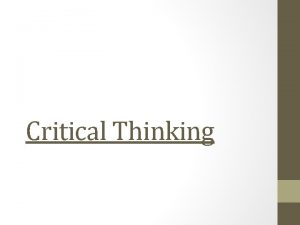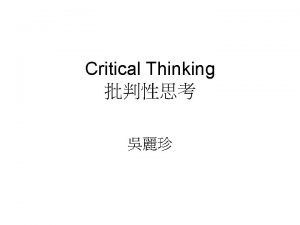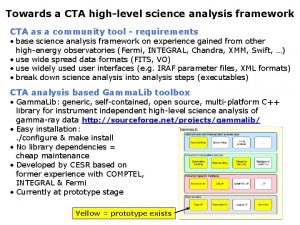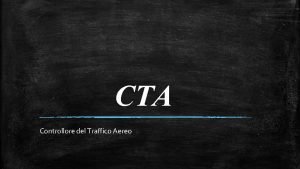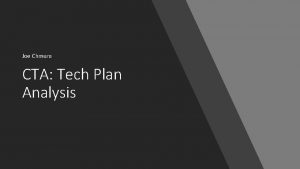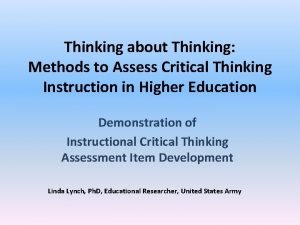CTA Critical Thinking Assessment FullCycle Assessment of Critical




















- Slides: 20

CTA (Critical Thinking Assessment) Full-Cycle Assessment of Critical Thinking in a General Education Seminar Jennifer Blue Beverley Taylor Jan Yarrison-Rice Department of Physics, Miami University, Oxford, Ohio

CTA Ethics & Science Course • First-Year Seminar at Miami University – first semester first-year students • Topic: Ethics & Science • A case-study approach • Lots of discussion, small group work, debates and written assignments • Improvement of critical thinking skills is an explicit goal of the course

CTA History of This Project • Assessment project initiated mid-semester Fall, 2004 • IRB approval sought • Each semester about half of students consented to have their work used • After course was over the Assessment Fellows read and assessed three papers per student

CTA Miami Univ. Assessment Fellows • Cross-disciplinary group formed in Fall, 2003 • Read about critical thinking • Tried to define critical thinking • Created lists of traits of critical thinking • Created a variety of rubrics to assess critical thinking • Finally settled on the Washington State rubric

CTA Washington State CT Project wsuctproject. wsu. edu

CTA Washington State CT Rubric 1. Identify and present the problem/question 2. Identify and present students’ own perspective and position 3. Identify and present others’ perspectives and positions 4. Identify and assess key assumptions 5. Identify and assess supporting data/evidence 6. Consider influence of context 7. Identify and assess implications and consequences

CTA Activity 1 Use the rubric to assess Example 1. Concentrate on traits 2 and 7 You have 10 minutes Feel free to talk to your neighbors. Scant (1) Student’s own position Conclusion Min. Mod dev. Sub. Dev. dev. (2) (3) (4)

CTA Results from Year 1 - Averages Identify problem Student perspective Other perspectives Assumptions Using evidence Context Conclusion Early assignment Midterm 1. 8 1. 48 2. 76 2. 14 1. 32 1. 24 1. 2 1. 32 1. 28 2. 10 1. 67 1. 71 1. 86 1. 95

CTA Year 1 - Frequency Data

CTA Year 1 - Frequency Data

CTA Modifying Assignments for Year 2 We decided that we needed: • More focused assignments • To specifically teach critical thinking skills • Assignments which • Broke down CT skills to smaller portions • Built from lower level skills to more difficult ones • A grading rubric for each assignment to give students in advance • Some assignments looking for all skills to see progress

CTA Activity 2 Use the rubric to assess Example 2. Concentrate on traits 1 and 6 You have 10 minutes Feel free to talk to your neighbors. Scant (1) Problem Context Min. Mod Sub. dev. (2) dev. (3) Dev. (4)

CTA Results from Year 2 - Averages Identify problem Student perspective Other perspectives Assumptions Using evidence Context Conclusion Early assignment Midterm 1. 5 1. 8 2. 5 1. 2 1. 4 1. 5 2. 1 1. 7 1. 8 1. 9

CTA Year 2 - Frequency Data

CTA Year 2 - Frequency Data

CTA Compare Years 1 and 2 • Papers show improvement from early to later in the semester – in both years • Re-writing and use of Peer Review was significant in producing that change • • Instructor more comfortable with grading • Students felt the rubrics were very helpful as they worked on their essays No real improvement in critical thinking from 2004 to 2005

CTA Student Perceptions of Rubrics (1) Strongly Agree to (6) Strongly Disagree Having rubric before wrote papers useful 1. 12 Having rubric before wrote papers helped organize writing Having rubric helped understand my grade 1. 24 Rubrics helped incorporate critical thinking into writing 2. 35 1. 88

CTA Discussion • How do you see this rubric working in your own classes? • Will you need to modify the rubric for your course? How? • Other ideas?

CTA Ideas for Next Iteration of Course • Use of bulleted lists for identifying particular critical thinking traits – a quick easy way to assess how students are doing • A few assignments throughout the semester in which students draw evidence together from more than one case study • Next offering will be to second semester first-year students – will student CT skills be different after 1 semester in college? • Your ideas? …

CTA Contact Information • Jennifer Blue, bluejm@muohio. edu • Beverley Taylor, taylorba@muohio. edu • Jan Yarrison-Rice, yarrisjm@muohio. edu Thank you!
 Perbedaan critical thinking dan creative thinking
Perbedaan critical thinking dan creative thinking Critical semi critical and non critical instruments
Critical semi critical and non critical instruments Spaulding classification system
Spaulding classification system Thinking skills
Thinking skills Cta freedom
Cta freedom Cta liberty
Cta liberty Cta goodman
Cta goodman Clasificacion de los espacios aereos
Clasificacion de los espacios aereos Fcf intranet arbitres
Fcf intranet arbitres Cta grading
Cta grading Athens tma vfr routes
Athens tma vfr routes Cta
Cta Antigel cta
Antigel cta Cta tamil
Cta tamil Cta templates
Cta templates Ctc cta
Ctc cta Cta
Cta Cta
Cta Atlashr
Atlashr Cta download
Cta download Mi cta
Mi cta



